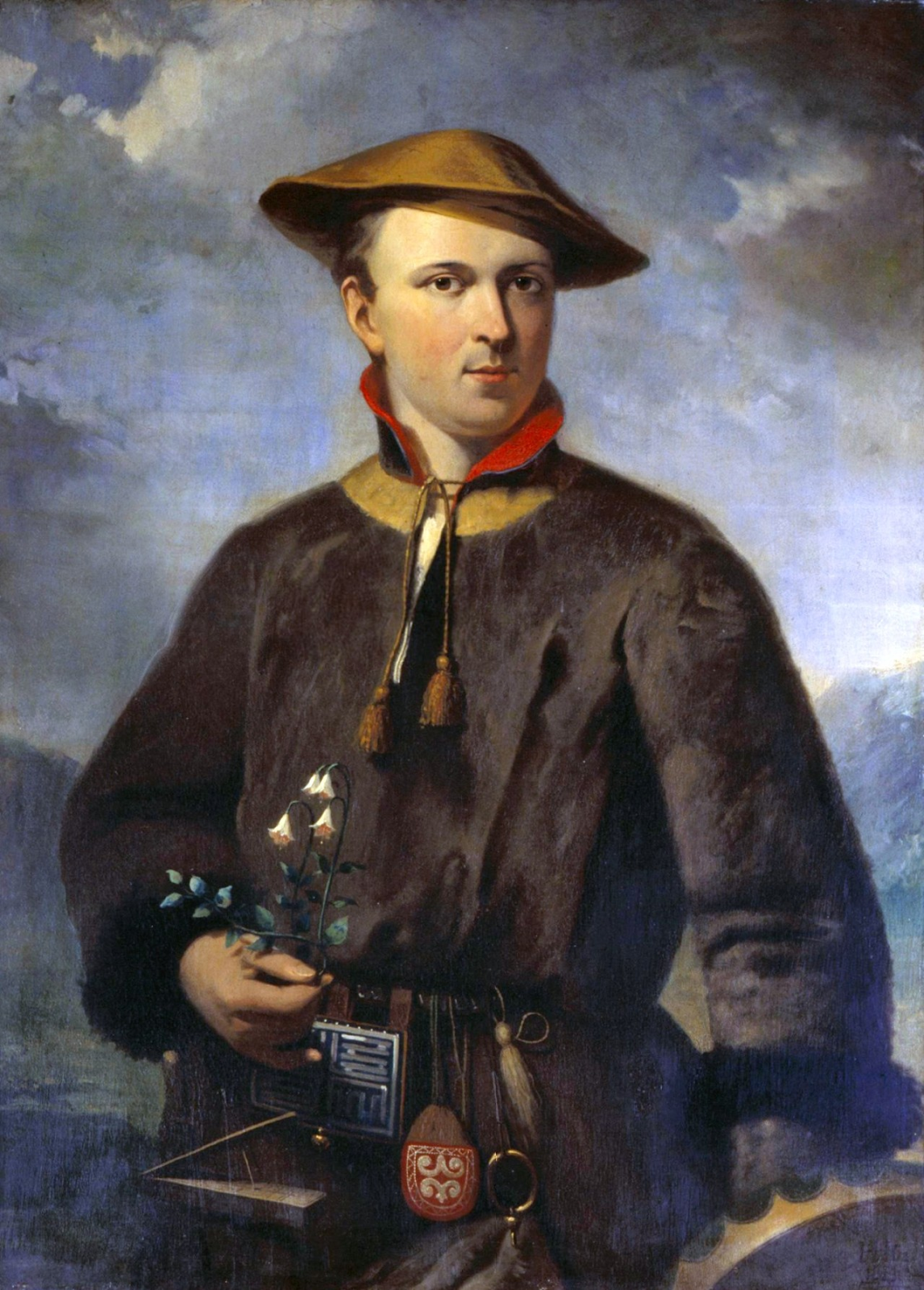June 9..
James Wood, Senior, told me to-day that Asa (?) Melvin's father told him that he had seen ale wives caught (many of them) in the meadow which we were crossing, on the west of Bateman's Pond, where now there is no stream, and though it is wet you can walk everywhere; also one shad. He thinks that a great part of the meadow once belonged to the pond.
Gathered the Linnæa borealis.
H. D. Thoreau, Journal, June 9, 1851
H. D. Thoreau, Journal, June 9, 1851
Gathered the Linnæa borealis. See June 1, 1855 ("I find the Linnaea borealis growing near the end of the ridge in this lot toward the meadow, near a large white pine stump recently cut."); June 4, 1855 ("The Linnaea borealis has grown an inch."); June 10, 1856 ("I find some linnaea well out, after all, within a rod of the top of the hill, apparently two or three days. If it flowered more abundantly, probably it would be earlier."); and July 15, 1858 ("At about one mile or three quarters below the summit [of Lafayette], just above the limit of trees, we came to a little pond. . . In the dwarf fir thickets above and below this pond, I saw the most beautiful linnaeas that I ever saw. They grew quite densely, full of rose-purple flowers, — deeper reddish purple than ours, which are pale, — perhaps nodding over the brink of a spring, altogether the fairest mountain flowers I saw.")
June 9. See A Book of the Seasons, by Henry Thoreau, June 9
A Book of the Seasons, by Henry Thoreau
"A book, each page written in its own season,
out-of-doors, in its own locality.”
~edited, assembled and rewritten by zphx © 2009-2024
AMERICAN TWINFLOWER There are about 21 references to this in Thoreau’s Journal.
His first mention of it is on June 9, 1851 where he records gathering it but not specifying where
- On January 21, 1852 he lists “Linnaea Borealis Wood” among other woodlands being cut down that winter more seriously than ever.
- On June 19, 1852 he notes not being able to find the Linnaea in Loring’s [woods?]|, perhaps because the woods are cut down. This suggests that this is the site referred to as Linnaea Borealis Wood in January of that year.
- On June 24, 1852 while in the vicinity of or returning from White Pond he remarks on finding this just going out of blossom and how he should have found it long ago, and how its leaves densely cover the ground.
- On June 3, 1853 he mentions going to Annursnack Hill by way of the Linnaea which was not yet flowering. The next sentence refers to “that thick pine wood” in connection with the Linnaea.
- On June 6, 1853 he visits the Linnaea Woods, a famous place for tanagers, and finds the Linnaea in flower.
- On May 30, 1854 he finds this budded in Stow’s Wood by Deep Cut.
- On June 7, 1854 he records going to Dugan Desert via the Linnaea Hills and finding it abundantly in flower.
- On June 1, 1855 he discovers a station for this at the end of a ridge while surveying the Holden wood-lot (in the vicinity of Nut Meadow Brook).
- On June 10, 1856 on his way to Dugan Desert he notes finding some of it in flower within a rod of the top of the hill [Linnaea Hills]. In the same paragraph he mentions sproutland of Loring’s thick wood that was.
- On August 28, 1856 going along Marlborough road he refers to going over “linnaea sprout-lands.”
From the above Journal references it appears that Thoreau knew Linnaea from three sites in Concord: the Loring’s Wood west of Loring’s Pond [Linnaea Borealis Wood, Linnaea Hill(s), Linnaea Wood-lot] Stow’s Wood by Deep Cut in the Walden Woods, and in the Holden wood-lot near Nut Meadow Brook ~ Ray Angelo, Vascular Flora of Concord Massachusetts, American Twinflower; See also
Painting by Hendrik Hollander, 1853. Via Wikimedia Commons.
Linnaeus adopted the twinflower as his personal symbol.
Linnaeus adopted the twinflower as his personal symbol.







No comments:
Post a Comment